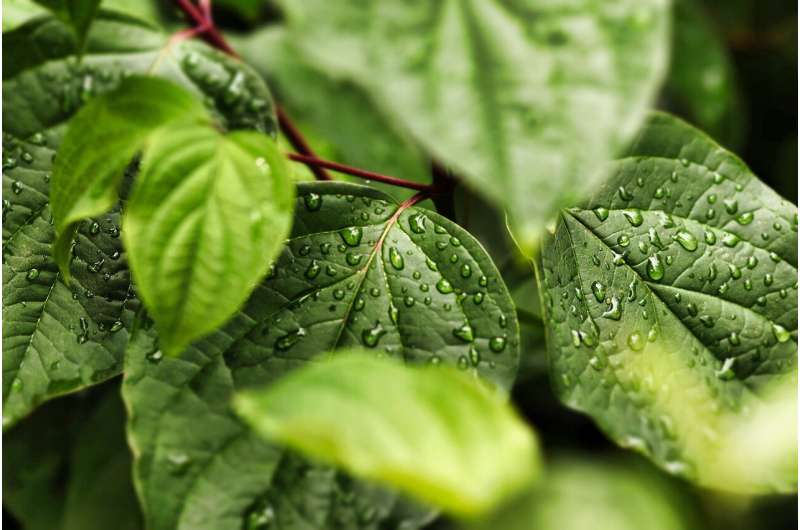Credit: CC0 Public Domain
What do dancing plants sound like?
It seems like the start of a philosophical essay question. But researchers at Virginia Tech think the answer could be one tool wielded in the future of agriculture in the commonwealth and beyond.
Using experimental technology, the scientists are trying to figure out how the sonification of plant movements could be used to assess plant health and aid farmers who need to monitor their greens at an industrial scale.
They are focused on indoor or so-called controlled-environment agriculture. Think greenhouses with LED lights and plants in hydroponic systems, using liquid nutrient solutions instead of soil.
"When you grow a plant inside a building, you really control ... introducing any insects or pathogens, minimizing the use of pesticides" and the like, said Bingyu Zhao, the lead researcher and associate professor in the School of Plant and Environmental Sciences. "But you can still have disease problems or sometimes they could have environmental stress."
Maybe the temperature's too high, he said, or the nitrogen levels are off. "It's all not good for the plant growth." Imagine a grower using an indoor facility with dozens of rows of plants. Unlike in a small backyard garden, they can't continuously check on every individual plant to monitor the effects of all those variables.
So Zhao got the idea to set up cameras to do it instead, using a small number of pepper plants for observation.
The high-resolution cameras capture the continuous movements of the plants. Over times, patterns develop.
These "micro movements" are mostly unseen by the human eye, Zhao said. But they become apparent when sped up in time-lapsed videos.
The even more unconventional part comes next.
The researchers take the data they've collected on plant movements and convert it into sound in a process called sonification.
In that way, a human could hear patterns present among the plants. The idea is to eventually be able to link certain sounds to indicators that a plant needs better light, for example.
Computers, analyzing the data at a large scale, could learn "what is a good sound and what is a bad sound," Zhao said.
He works with professors across other disciplines in engineering and in the School of Performing Arts to bring together the different elements.
The plant movement project is just one part of the university's new statewide SmartFarm Innovation Network, said Susan Duncan, associate director of the Virginia Agricultural Experiment Station.
Two years ago, the school brought together stakeholders in the agriculture and food processing fields from around Virginia to hear their concerns and interests, she said.
One big takeaway: technological innovation was on everyone's mind. In order to maintain a future workforce and catch up with evolving needs, they needed to think outside traditional agricultural techniques, she said.
So the decentralized network was born, consisting of 11 off-campus research centers including the Hampton Roads Agricultural Research And Extension Center in Virginia Beach. Though the center in our region isn't involved in the "dancing plants" project, it has plenty of its own areas of study, including water quality and boxwood blight disease.
There are more than 100 research projects connected to the network delving into the future of agriculture.
With growing plants indoors, for example, "you can't just say, 'I'm going to put this LED light over my plant and see how it goes,'" Duncan said. "There's a science behind it."
In the operating room, surgeons often use sound to be able to keep track of routine measurements such as blood pressure while performing surgery, Duncan said.
Applying that to plants, she said, is "how they can help guide us to make decisions for them."
"It's kind of a cool concept. If they start 'screaming,' whatever that sounds like, we can pay attention."
©2020 The Virginian-Pilot (Norfolk, Va.)
Distributed by Tribune Content Agency, LLC.
























